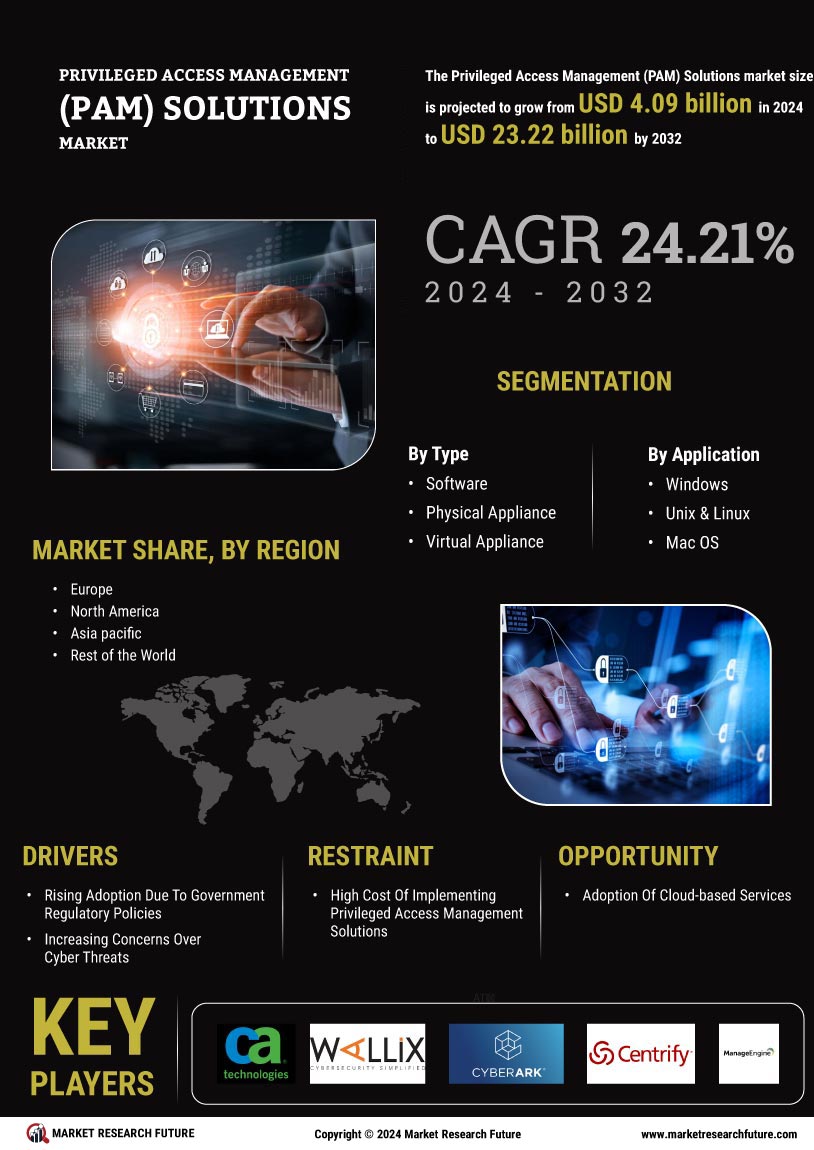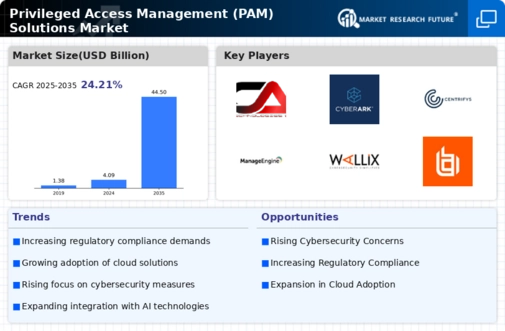Increased Cloud Adoption
The rapid shift towards cloud computing is reshaping the Global Privileged Access Management (PAM) Solutions Market Industry. As organizations migrate to cloud environments, the need for secure access management becomes paramount. PAM solutions are essential for managing privileged accounts across diverse cloud platforms, ensuring that sensitive data remains protected. The market is projected to expand significantly, with a CAGR of 24.23% anticipated from 2025 to 2035. This growth reflects the increasing reliance on cloud services and the corresponding demand for effective PAM solutions to mitigate risks associated with cloud-based infrastructures.
Market Growth Projections
The Global Privileged Access Management (PAM) Solutions Market Industry is poised for remarkable growth, with projections indicating a rise from 4.09 USD Billion in 2024 to 44.5 USD Billion by 2035. This trajectory suggests a robust compound annual growth rate (CAGR) of 24.23% from 2025 to 2035. Such growth is indicative of the increasing recognition of the importance of privileged access management in safeguarding sensitive information and critical systems. As organizations continue to invest in security measures, the PAM market is likely to expand, reflecting the evolving landscape of cybersecurity and access management.
Rising Cybersecurity Threats
The Global Privileged Access Management (PAM) Solutions Market Industry is experiencing heightened demand due to the escalating frequency and sophistication of cyber threats. Organizations are increasingly recognizing the necessity of protecting sensitive data and critical systems from unauthorized access. In 2024, the market is projected to reach 4.09 USD Billion, driven by the urgent need for robust security measures. As cyberattacks become more prevalent, the adoption of PAM solutions is likely to surge, with businesses investing in technologies that safeguard privileged accounts. This trend is expected to continue, as the industry evolves to counteract emerging threats.
Digital Transformation Initiatives
Digital transformation is a key catalyst driving the Global Privileged Access Management (PAM) Solutions Market Industry. As organizations embrace digital technologies to enhance operational efficiency, the complexity of managing privileged access increases. PAM solutions provide the necessary tools to secure access to critical systems and applications, thereby supporting digital initiatives. The market is expected to witness substantial growth, with projections indicating a rise to 44.5 USD Billion by 2035. This transformation underscores the importance of PAM solutions in enabling organizations to navigate the challenges posed by digitalization while maintaining security.
Regulatory Compliance Requirements
Compliance with stringent regulatory frameworks is a pivotal driver in the Global Privileged Access Management (PAM) Solutions Market Industry. Organizations are compelled to adhere to regulations such as GDPR, HIPAA, and PCI-DSS, which mandate stringent access controls and data protection measures. Failure to comply can result in severe penalties, prompting businesses to invest in PAM solutions that facilitate compliance. As regulations evolve, the demand for PAM technologies is likely to grow, ensuring that organizations can effectively manage and monitor privileged access. This regulatory landscape is expected to significantly influence market dynamics through 2035.
Growing Awareness of Insider Threats
The recognition of insider threats is increasingly influencing the Global Privileged Access Management (PAM) Solutions Market Industry. Organizations are becoming aware that threats can originate from within, necessitating robust access controls and monitoring mechanisms. PAM solutions are designed to mitigate these risks by providing visibility and control over privileged accounts. As businesses prioritize insider threat prevention, the demand for PAM technologies is likely to rise. This growing awareness is expected to shape market trends, driving investments in solutions that enhance security and protect against potential internal breaches.










